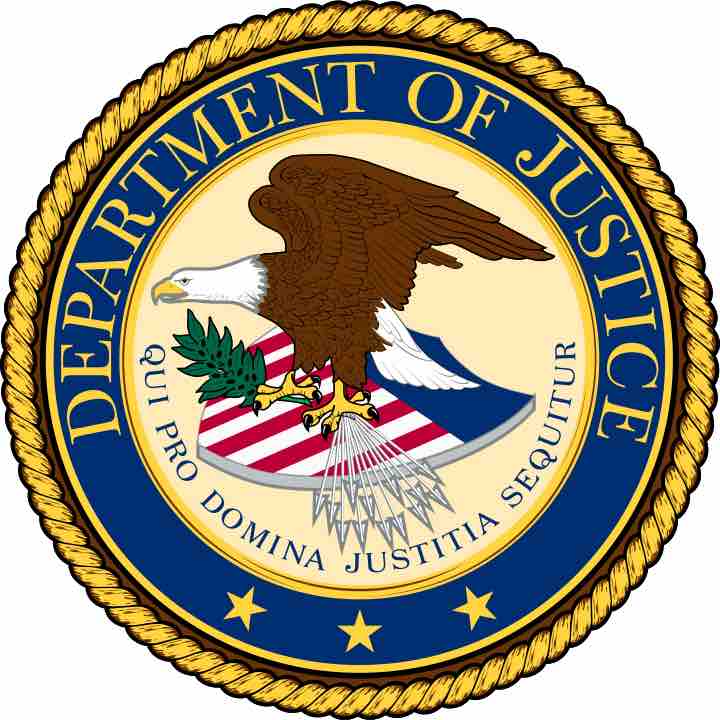The Cabinet of the United States consists of the highest-ranking appointed officers in the executive branch of the federal government: the secretaries of each of the 15 executive departments. These Cabinet members preside over bureaucratic operations and serve as advisors to the president. All secretaries are directly accountable to the president, and they do not have the power to enforce any policy recommendations outside of their department.
The president nominates secretaries to their offices, and the Senate votes to confirm them. Secretaries are not subject to elections or term limits, but most turnover when a new political party wins the presidency.
Structure of the Cabinet Departments
Each of the Cabinet departments is organized with a similar hierarchical structure. At the top of each department is the secretary (in the Department of Justice, the highest office is called the "attorney general," but the role is parallel to that of the secretary of state, defense, etc.).
Beneath the secretary, each executive department has a deputy secretary. The deputy secretary advises and assists the secretary, and fills the Office of Secretary if it becomes vacant. The deputy secretary is nominated by the president, just as the secretary is.
Below the level of deputy secretary, departmental organization varies. Most departments have several under secretaries, who preside over specific branches of the organization rather than being accountable for the functioning of the entire department, as the secretary and deputy secretary are. Under secretaries are appointed by the president, but range in prestige depending on the size of the department they are employed in and the breadth of affairs they oversee.
Finally, each department has its own staff. Departmental staffs are not appointed by the president, but instead are hired by internal supervisors (such as under secretaries). Staff qualifications and duties range widely by department. For example, national park service employees are considered staff of the Department of the Interior, but some may work on policy in Washington, while others tend to conservation in Yellowstone. Likewise, military staff includes soldiers on active duty who are not administrative employees but are nonetheless under the purview of the Department of Defense.
Taken as a group, the executive departments employ over 4 million people and have an operating budget of over $2.3 trillion.
History of the Cabinet
The first president of the United States, George Washington, established the tradition of having a cabinet of advisors. The U.S. Constitution specifically calls for the creation of executive departments, but it only addresses the leaders of executive departments to specify that as unelected officials they must answer to the president and do not have the power to enforce their recommendations. George Washington thus began the practice of having a formal cabinet of advisors when he appointed Secretary of State Thomas Jefferson, Secretary of the Treasury Alexander Hamilton, Secretary of War Henry Knox, and Attorney General Edmund Randolph.
The three oldest executive departments are the Department of State, the Department of War, and the Treasury, all of which were established in 1789. The Department of War has since been subsumed by the Department of Defense, and many other executive departments have been formed.
The Line of Succession
The secretaries are formally in the line of presidential succession, after the vice president, speaker of the house, and president pro tempore of the Senate. In other words, if the president, vice president, speaker, and president pro temopre were all incapacitated by death, resignation, or impeachment, the Cabinet members would ascend to the Office of President in a predetermined order. The order of the departments, and the roles of the secretaries of each department, is as follows:
- State: The Secretary of State oversees international relations.
- Treasury: The Secretary of the Treasury is concerned with financial and monetary issues.
- Defense: The Secretary of Defense supervises national defense and the armed forces.
- Justice: The Attorney General is responsible for law enforcement.
- Interior: The Secretary of the Interior oversees federal land and natural resource use.
- Agriculture: The Secretary of Agriculture advises policy on food, farming, and agricultural trade.
- Commerce: The Secretary of Commerce is concerned with economic growth.
- Labor: The Secretary of Labor is responsible for occupational safety and workplace regulation.
- Health and Human Services: The Secretary of Health and Human Services is charged with ensuring the health and well being of Americans.
- Housing and Urban Development: The Secretary of Housing and Urban Development administers affordable housing and city planning.
- Transportation: The Secretary of Transportation oversees transportation infrastructure and policies.
- Energy: The Secretary of Energy is responsible for research into energy sources and the handling of nuclear material.
- Education: The Secretary of Education oversees public schools.
- Veterans Affairs: The Secretary of Veterans Affairs coordinates programs and benefits for veterans
- Homeland Security: The Secretary of Homeland Security is responsible for domestic security measures
In addition to the secretaries of the established executive departments, there are some cabinet-level officers who are the heads of independent executive agencies. These agencies do not answer to the president directly and, therefore, there are no executive departments strictly speaking. Still, their heads are considered high ranking advisors to the president. These cabinet-level officers include the vice president, the chief of staff, the director of the Office of Management and Budget, the administrator of the Environmental Protection Agency, the trade representative, the ambassador to the United Nations, the chairman of the Council of Economic Advisors, and the administrator of the Small Business Administration.

Department of Justice Seal
The attorney general is the head of the Department of Justice, and is a prominent cabinet member.